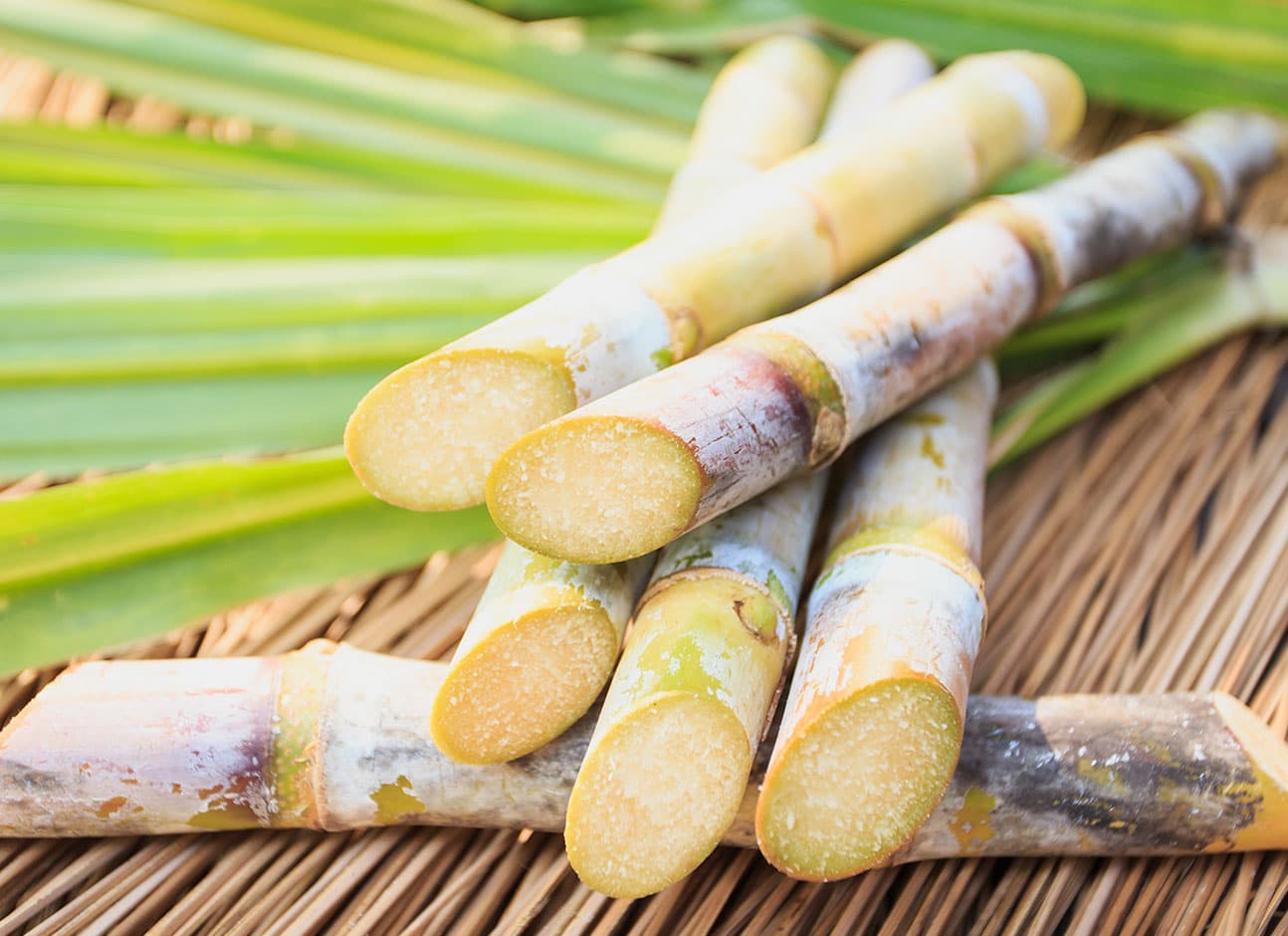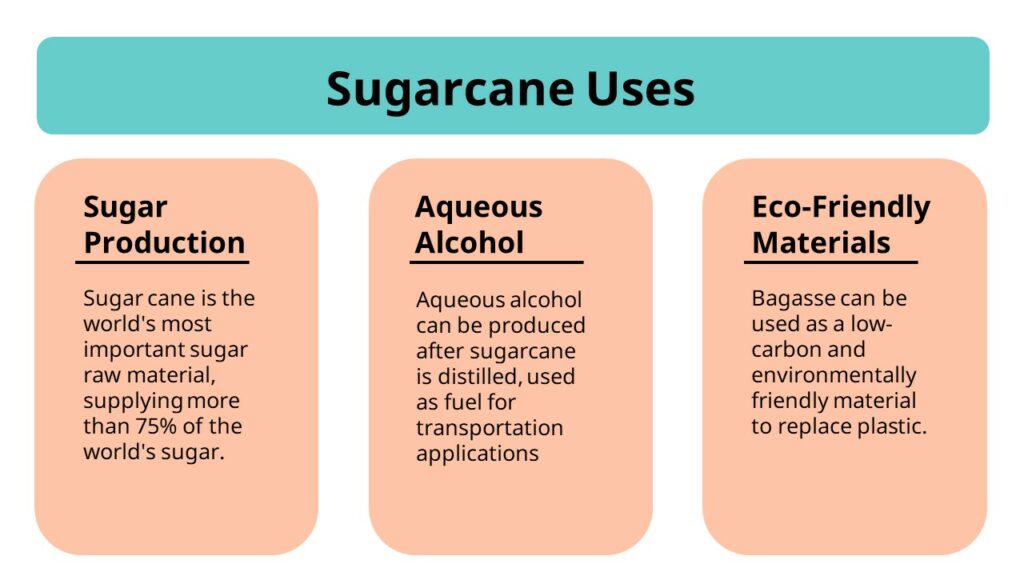Everything About Sugar Canes: What Are Sugar Canes Made Use Of For and Their Duty in Global Agriculture?
Sugar canes act as a foundation of global farming, primarily recognized for their role in sugar manufacturing. They likewise add to the creation of spin-offs like molasses and ethanol. These aspects not only sustain different sectors but likewise impact financial security in country areas. The growing of sugar walking sticks encounters significant environmental challenges. Understanding their multifaceted function triggers additional expedition right into their farming practices and sustainability initiatives.
The Agricultural Process of Sugar Walking Cane Cultivation
Sugar cane growing might vary by region, the essential farming process stays regular. The first action involves selecting high-yielding selections suitable for local climates. Preparation of the soil is essential, typically calling for tillage and the enhancement of plant foods to enhance fertility. Growing normally happens during the stormy season, with farmers utilizing either entire stalks or cuttings to develop new crops.As the plants grow, they require diligent care, consisting of weed control, pest monitoring, and irrigation, relying on the environmental conditions. Farmers keep an eye on the sugar cane's development cycle, which normally extends 10 to 24 months, prior to collecting. Gathering is labor-intensive, often performed manually or with specialized machinery, ensuring marginal damage to the stalks. Adhering to harvest, the walking stick is transported to refining centers. This precise farming procedure not only supports regional economies yet likewise plays a substantial duty in worldwide farming practices, contributing to food and power supplies.
Sugar Production: From Walking Cane to Crystal
The trip of sugar production starts the moment fresh collected sugar walking cane comes to processing facilities. The very first step entails chopping the walking stick and cleaning to prepare it for removal. Making use of high-pressure rollers, the juice is extracted from the crushed walking cane, leading to a wonderful fluid known as sugarcane juice. This juice goes through explanation, where pollutants are gotten rid of via the addition of lime and heat.Next, the made clear juice is concentrated by boiling it to produce a thick syrup. This syrup is after that crystallized by cooling, making it possible for sugar crystals to develop. The taken shape sugar is divided from the staying syrup, understood as molasses, with centrifugation.Finally, the sugar crystals are cleaned and dried, leading to the familiar granulated sugar (What Are Sugar Canes Used For). This process changes raw sugar walking stick into an item that is indispensable to numerous culinary and commercial applications, highlighting the value of sugar in international farming
Biofuels and Sugar Canes: A Lasting Future
As the world increasingly seeks lasting energy options, sugar walking sticks have actually become an encouraging resource for biofuels. The biomass originated from sugar canes can be transformed right into ethanol, an eco-friendly fuel alternative that noticeably reduces greenhouse gas emissions compared to fossil fuels. This procedure not only offers a cleaner energy source yet also advertises power freedom for many countries.In enhancement, sugar cane farming supports rural economic situations by creating tasks in both farming and biofuel manufacturing markets. The usage of sugar walking canes for biofuel production additionally encourages agricultural diversification, which can enhance soil health and reduce reliance on solitary plants. The spin-offs of sugar walking stick handling can be made use of for electrical energy generation, in addition contributing to a lasting power cycle. As countries undertaking to satisfy renewable resource targets, sugar canes are positioned to play a vital duty in shaping an extra sustainable future in the biofuel landscape.

The Function of Sugar Canes in Drink Production
Sugar canes play a significant duty in drink production, acting as a primary active ingredient in rum and adding to the sweet taste of many sodas. In addition, their all-natural juices are made use of in different drinks, improving taste and charm. This flexibility underscores the significance of sugar walking canes in the worldwide beverage sector.
Sugar Walking Cane in Rum
Rum production is elaborately linked to the cultivation of sugar cane, a necessary plant that gives the necessary fermentable sugars required for fermentation. This procedure starts with the extraction of juice from gathered sugar canes, which is then either fermented straight or processed into molasses. Yeast is contributed to transform the sugars into alcohol, causing a varied series of rum designs, from light to dark varieties. The geographical area where the sugar walking stick is expanded significantly affects the taste profile of the rum, with variables such as soil kind and climate playing essential functions. Countries like Barbados, Jamaica, and Cuba are renowned for their rum manufacturing, reflecting the social and historical significance of sugar cane within the worldwide beverage market.
Soft Drinks Sugar Resource

Natural Juice Manufacturing Makes Use Of
Along with its considerable role in soft beverage manufacturing, sugar walking cane is likewise crucial in the all-natural juice sector. The juice removed from sugar walking stick, known as walking cane juice, is celebrated for its all-natural sweet taste and special taste profile. This juice is frequently consumed fresh in various regions, especially in tropical countries, where it is taken pleasure in as a renewing beverage. Furthermore, cane juice functions as a base component in a series of natural fruit juices and shakes, improving both taste and dietary value. Its natural buildings make it an attractive alternative to sweetening agents, interesting health-conscious customers. In general, sugar cane's convenience in juice manufacturing underscores its relevance in contemporary beverage offerings worldwide.
Developments in Sugar Walking Cane Byproducts
Developments in sugar cane byproducts are leading the way for lasting services in different markets. Biofuels originated from sugar cane use a different power resource, while advancements in sustainable packaging are lowering dependence on traditional products. These growths highlight the adaptability and capacity of sugar cane beyond its primary usage in beverage manufacturing.
Biofuels From Sugar Cane
How can the results of sugar cane contribute to sustainable energy services? The conversion of sugar cane into biofuels presents an encouraging method for sustainable power. By utilizing the coarse residue, called bagasse, producers can generate bioethanol through fermentation procedures. This bioethanol can serve as a lasting alternative to nonrenewable fuel sources, reducing greenhouse gas exhausts and dependence on non-renewable resources. In addition, molasses, an additional by-product, can be fermented to generate biofuels, optimizing resource performance. The energy produced from sugar walking cane not only gives a cleaner gas resource yet also boosts the total economic practicality of sugar manufacturing. By incorporating biofuel production right into their operations, sugar cane markets can play a vital duty ahead of time lasting power solutions globally.
Sustainable Product Packaging Solutions
Lasting these details product packaging options are increasingly being established from sugar walking stick by-products, showcasing the versatility of this agricultural staple. Advancements such as naturally degradable plastics originated from bagasse, the fibrous deposit left after juice extraction, are gaining traction. These products offer an environment-friendly option to conventional plastics, lowering dependence on fossil gas and decreasing carbon footprints. In addition, sugar cane-based product packaging is compostable, breaking down normally without harming the setting. Business are currently discovering these alternatives to line up with consumer demand for sustainability. As awareness of plastic air pollution expands, the adoption of sugar cane-derived packaging is anticipated to increase, placing sugar walking canes as a crucial player in the change to greener product packaging remedies in various industries.
Economic Effect of Sugar Walking Cane Farming

Although sugar walking stick farming has deep roots in several economies, its financial impact extends much beyond agricultural production. This plant works as a substantial income for numerous farmers worldwide, especially in developing nations where farming is a primary livelihood. Sugar walking stick adds to regional economic situations via job production in handling, harvesting, and farming. The market also stimulates growth in associated fields such as transportation, devices manufacturing, and food processing.Furthermore, sugar cane is a key gamer in worldwide profession, influencing worldwide markets and rates. Countries that generate sugar cane frequently depend on exports to improve their financial stability. The byproducts of sugar walking stick, such as ethanol and molasses, expand revenue streams for farmers and include worth to the farming market. Overall, the economic implications of sugar cane farming are extensive, about his impacting not just farmers yet also entire neighborhoods and national economies.
Ecological Factors To Consider in Sugar Walking Stick Cultivation
While sugar walking cane farming plays an essential role in many economies, it additionally elevates considerable environmental problems that can not be forgotten. The comprehensive use plant foods and pesticides in sugar walking cane farming commonly leads to soil degradation and water air pollution. Runoff from these chemicals can pollute neighboring water bodies, harming water environments. In addition, the monoculture methods common in sugar cane farming reduce biodiversity, making environments much more prone to insects and diseases.Deforestation is an additional crucial concern, as land is commonly cleared to make way for sugar plantations, bring about habitat loss for wildlife and enhanced carbon discharges. The high water usage needed for sugar walking cane irrigation can strain local water sources, particularly in dry regions. As global need for sugar remains to rise, dealing with these ecological obstacles comes to be vital to guarantee lasting methods in sugar cane cultivation.
Frequently Asked Inquiries
What Are the Nutritional Conveniences of Sugar Walking Stick?
The dietary benefits of sugar cane mostly include its high carb web content, offering energy. Additionally, it contains vitamins, minerals, and anti-oxidants that may sustain overall wellness, though small amounts is crucial because of its sugar content.
Just How Does Sugar Walking Cane Affect Local Ecosystems?
Sugar cane cultivation can greatly influence regional environments Visit This Link by altering land use, impacting biodiversity, and requiring substantial water sources. Furthermore, it may lead to soil degradation and chemical drainage, interrupting bordering habitats and wildlife populations.
What Is the Background of Sugar Walking Cane Farming?

Exist Alternatives to Sugar Cane for Sugar Manufacturing?
Alternatives to sugar walking cane for sugar production include sugar beets, corn, and various exotic plants like sorghum and agave (What Are Sugar Canes Used For). These plants offer varied resources of sweetness, each with distinct growing needs and environmental influences
How Do Weather Condition Patterns Influence Sugar Cane Yields?
Climate patterns substantially affect sugar walking stick yields via temperature variations, rains quantities, and seasonal cycles. Drought or extreme rainfall can impede growth, while excellent conditions improve photosynthesis, ultimately impacting the quantity and top quality of the harvest. The trip of sugar production begins the minute freshly harvested sugar walking stick gets here at refining centers. The taken shape sugar is divided from the staying syrup, recognized as molasses, with centrifugation.Finally, the sugar crystals are cleaned and dried out, resulting in the acquainted granulated sugar. Rum manufacturing is intricately connected to the farming of sugar walking stick, an important plant that provides the needed fermentable sugars required for fermentation. Furthermore, the monoculture practices prevalent in sugar cane farming lower biodiversity, making communities a lot more vulnerable to pests and diseases.Deforestation is another critical problem, as land is often removed to make method for sugar vineyards, leading to habitat loss for wildlife and increased carbon discharges. Alternatives to sugar walking cane for sugar manufacturing consist of sugar beetroots, corn, and different exotic plants like sorghum and agave.